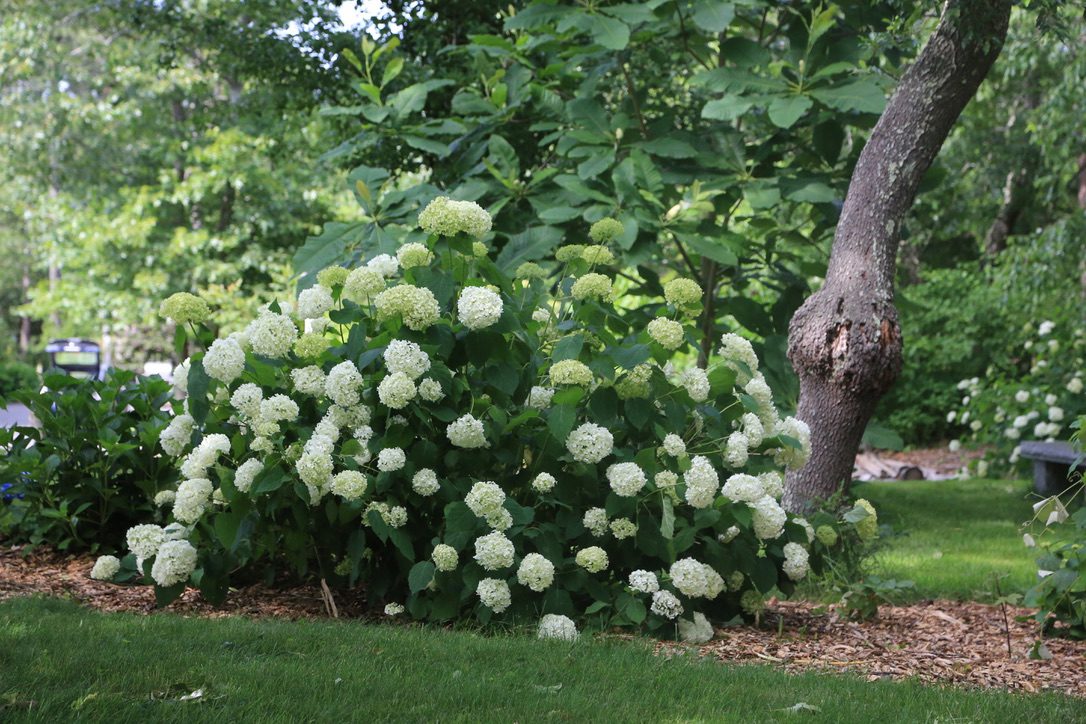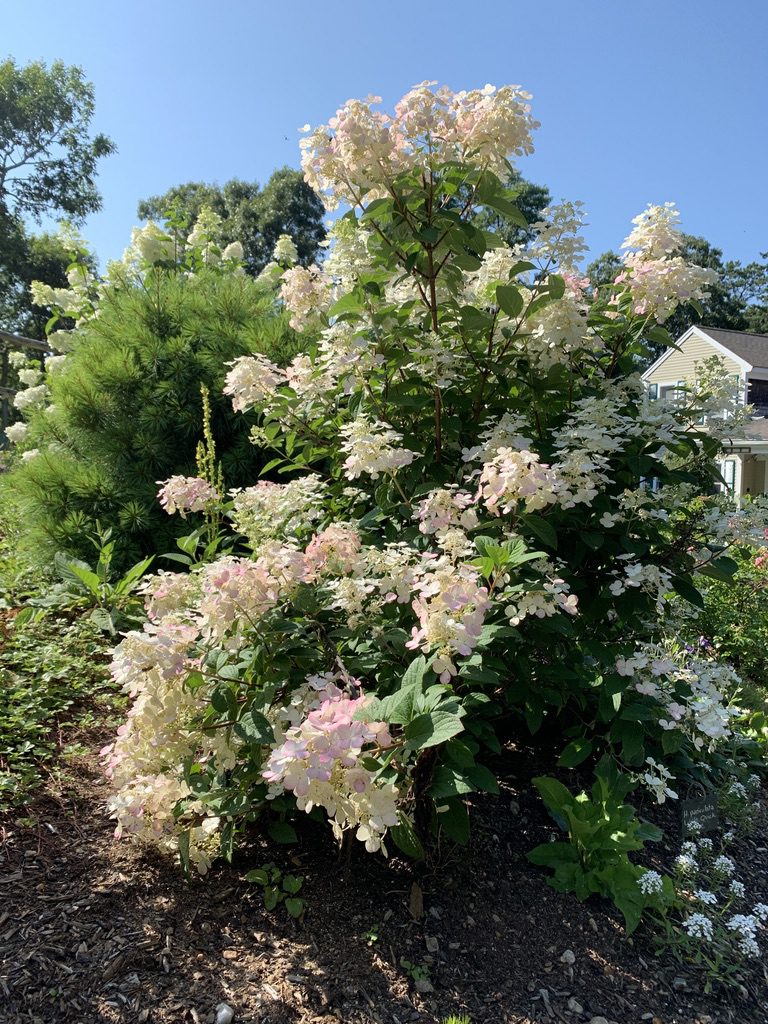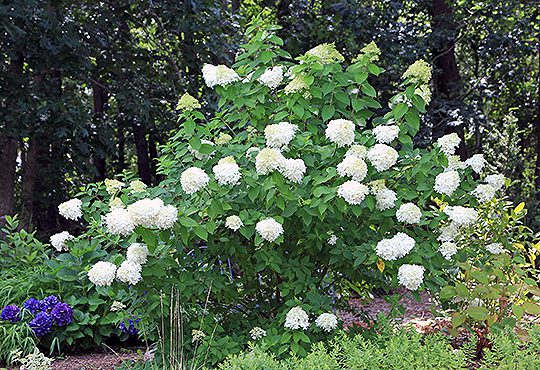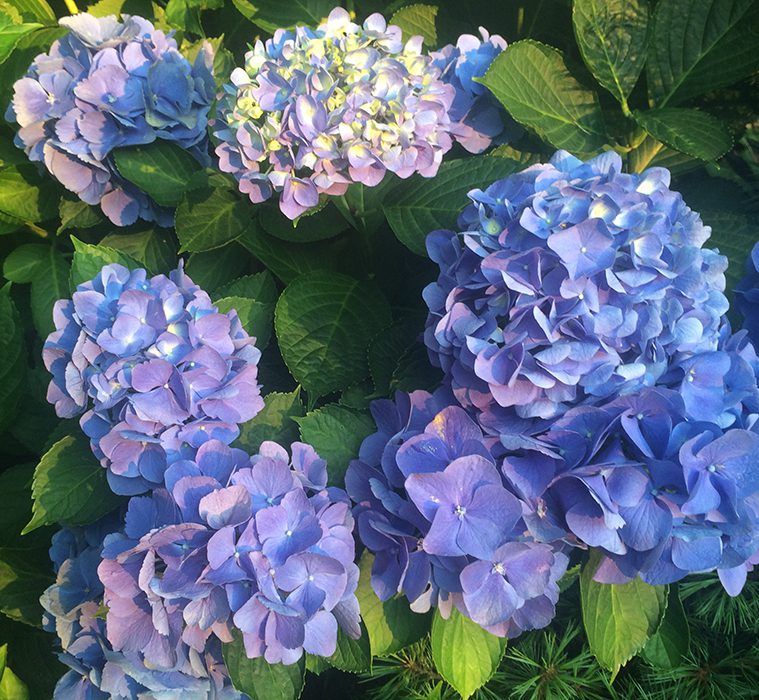Questions from Customers: Hydrangea Pruning
Questions from Customers: Hydrangea Pruning
I helped a customer today who was typical of many people who grow hydrangeas. “How do I prune my various hydrangea shrubs?” she asked. “I’ve looked on the internet and it just leaves me even more confused.” Since we know that if one customer has this question it’s likely that many people have this question, here is a photo-tutorial about which hydrangeas get pruned and how to trim them. There are basically two types of hydrangeas: those that bloom on new growth that forms in the spring and produces flowers that same summer, and those that form their flower buds the summer before. The types that form their flower buds the year before carry those buds through the winter, and if those buds don’t get zapped by cold winter temperatures and wind, they will develop into flowers the next summer. Let’s call them the new growth bloomers and the second-year bloomers.
The new growth bloomers get pruned in the following way: 1. Prune these in the spring when they start to bud out and break dormancy. When this happens you can tell what is alive and what isn’t. 2. The first thing you do is to take off any dead stems and twigs. If it doesn’t have green growth on it, cut it out. 3. Next, look for any stems that are growing into the center of the plant instead of out and away from the center. Cut these out by following them back to where they join another stem, and cut them there. Leave just a tiny stub. 4. Then look for any crossed branches – if two stems are rubbing against each other this makes wounds on the plant. Find these and remove one of them by following it back to where it joins another stem or trunk and cutting it off there, leaving just a tiny stub. 5. Next, cut off anything that is weak, curvy, or odd looking, again, not leaving much but a tiny stub. 6. Remove any stems that are laying on the ground. 7. Finally, clip back any long stems knowing that where ever you make the cut that stem is likely to branch into two in that location.
The second year bloomers, which includes lace-caps and mop-heads, get pruned in the following way: 1. Prune these when the buds have started to open and you can see green leaves the size of a dime on the old stems. Note that in seasons after a cold winter you might not see any such leaves on the old stems and if this happens you can cut everything down to the ground in mid-May. 2. When you can see some stems with dime-sized leaves, prune by first removing all dead canes that have no leaves at all. Cut these to the ground. 3. Next cut off any other deadwood, moving from the top down and cutting just above the first set of leaves you come to. 4. Finally, cut out any stems that are curvy, weak or horizontal to the ground. You can download a pdf about pruning lace caps and mop head hydrangeas here. Check out these photos to see if you should prune your shrubs as new growth bloomers or as second year bloomers.






No matter which type of Hydrangea plants you have, know this: prune them to improve appearance, not control size. There is no way to make a large hydrangea small again. If your hydrangea has “gotten out of control” it isn’t really running amuck…it’s just done what plants are genetically programed to do: grow larger. If your shrub has grown over the windows or walkway, move it to another location and plant a variety of hydrangea that won’t get as large instead. Repeat after me: there is no way to make a large hydrangea small again. Give it up.
6 Comments
Leave a Comment
Subscribe To Our Newsletter
Sign up for our weekly email about sales and events.

Thank you! I shared this with my neighbors in a new development with many types of these beautiful plants.
Glad you found it useful, Pat!
Great blog! I shared it on our facebook page as this is a recurring questions with many of our customers and employees. I will be using this as a teaching tool to further educate all of our employees.
Thanks, Alex! So glad you found it useful. Now if it would just warm up a tad we’d all feel better about getting out there with the pruners…
Great article and really helpful.
I notice that you did not talk about pruning h. quercifolia. I have two “Alice” hydrangeas. I think that they are “supposed” to be pruned like second-year bloomers. But as they are still relatively bare of leaves, I see that mine are full of tangled stems, some of which are very thin. Any advice on pruning in the spring?
You are correct, Emily, that the oak leaf hydrangeas flower on “old growth” – but since they are not cane-growers like the mopheads and lacecaps, you’d prune them immediately after flowering. Any spring pruning would just be to remove deadwood and crossed/funky branches…kind of a spring “tune up” only!